
by Molly Jameson | Aug 12, 2021

Article by Rachel Mathes, Horticulture Program Assistant with UF/IFAS Extension Leon County.
By Rachel Mathes
My only brother and his family live in Appleton, Wisconsin. Though I’m only able to see my niece and nephews one or two times a year, we have a deep connection through our love of the outdoors.

Zach discovering the joy of nature. Photo by Rachel Mathes.
Their middle son, Zachary, is a budding naturalist at just four years old. When I visit them, Zach, his brother Connor, sister Cecilia, and I, load up the wagon and go for walks on the edge of the prairie in their neighborhood. We start our walks looking for scat and signs of wildlife. Because the kids are so close to the ground, they often spot wildlife trails before I do. We talk about what animals may be there, what they eat, and how we can help them.
After each walk, we wind down at home with an iNaturalist session. Zach and his siblings help me choose what animal or plant we think we saw with the help of the app’s nearby suggestions tool. A favorite game we play after all our photos are entered into the app is a game we’ve coined, “where’s that animal?” We use the iNaturalist explore feature to find sightings of exciting creatures like wolves and beavers near their home. The kids have learned that even scientists often don’t see the animals they study, just signs of them.
At age three, Zach learned to identify milkweed with impressive accuracy. I pointed out the plant on a previous trip more than six months earlier and he remembered how to find them. Common milkweed, Asclepias syriaca, is a large leafed species that prefers winters a bit colder than we get here in the Florida Panhandle, but is native in northern states across the Eastern US, including Wisconsin. Zach is often stopping the wagon to scout for monarch caterpillars, finding even the smallest instars and eggs.

Zach learned to identify common milkweed, Asclepias syriaca, at the age of three. Photo by Rachel Mathes.
When I video call the kids from Florida, Zach is often asking to see my fruit trees, vines, and bushes. He knows that we have very different seasons than Wisconsin when I am eating blueberries in May and he’s still knocking frost off his snow boots. In July, he tells me about the raspberries they find in the woods with their dad. We both get a bit of seasonal berry jealousy. On my last trip we planted thornless blackberries in their garden together. It remains to be seen whether the birds will let the kids have a harvest, but the kids will be excited either way.
Though we may live a thousand miles apart, I know my relationship with my niece and nephews will continue to thrive as they explore the natural world around them. One day, I hope to introduce them to the awe of Florida manatees and alligators. Until then, I will relish the time we get to spend together outdoors in nature and on the phone together. I know that Zachary and his siblings will grow up having respect for the natural world and I hope he always exclaims, “Monarch! Look auntie Rachel, a monarch caterpillar!” on our walks together.
Author: Rachel Mathes, Horticulture Program Assistant with UF/IFAS Extension Leon County.
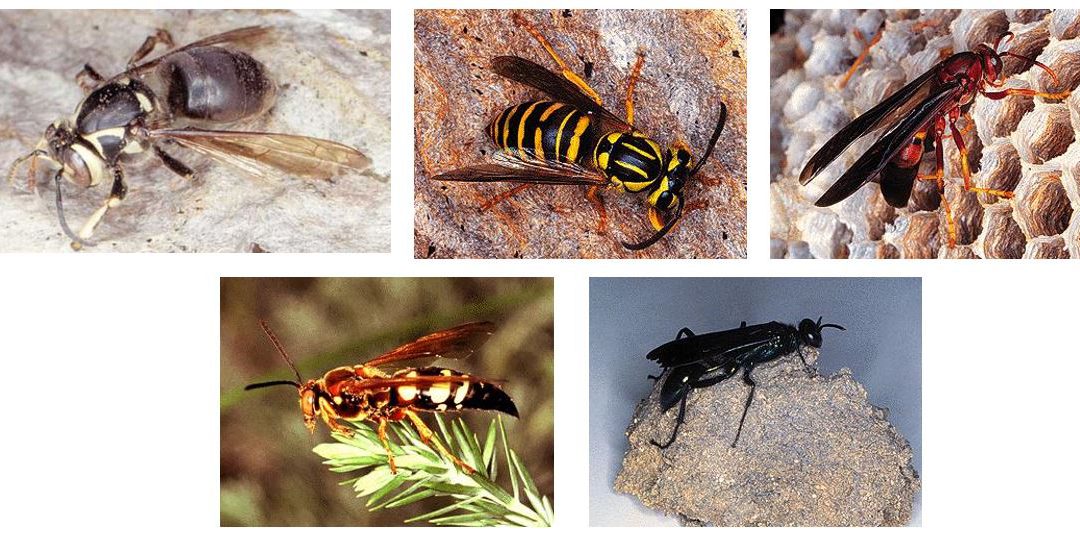
by Ray Bodrey | Nov 30, 2020
Yes, wasps are definitely good guys. Wasps are beneficial insects that feed on other insects, by destroying many harmful bugs that attack our landscape ornamentals and home vegetable gardens. However, they tend not to be very friendly to us, when we encroach on their territory. In other words, we really don’t want them to be close neighbors.
There are five members of the wasp family commonly encountered in Florida. These are hornets (Vespa spp.), yellow jackets (Vespula spp.), paper wasps (Polistes spp.), mud or dirt daubers (Sphecidae spp.), and cicada killers (Specius speciosus). Hornets, yellow jackets, and paper wasps are likely to sting if you go near or disrupt their nests. Mud daubers and cicada killers usually will not sting, unless you touch them.
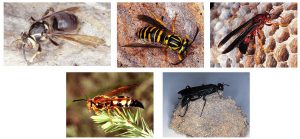
Photo: Clockwise from top left: Hornet, Yellow Jacket, Paper Wasp, Mud Dauber and Cicada Killer.
Credit: P. G. Koehler and J. L. Castner, UF/IFAS Extension, Department of Entomology and Nematology.
There are parasitoid wasps, such as Tamarixia radiata, that are very beneficial, if you are a citrus grower. This native species is a biological control method for the Asian citrus psyllid, which is the vector for the devastating citrus greening disease. If you are interested in releasing juvenile Tamarixia radiata on your property please visit the Florida Department of Agriculture and Consumer Services website for an application: https://www.fdacs.gov/Divisions-Offices/Plant-Industry/Bureaus-and-Services/Methods-Development-Biological-Control/Biological-Control/Asian-Citrus-Psyllid-Biological-Control/Biological-Control-of-Asian-Citrus-Psyllid-in-Dooryard-Citrus-and-Ornamentals/Tamarixia-Release-Application or call 1-800-435-7352.
So, how do I identify nests? Hornets build football-shaped or pear-like nests usually in trees, away from populated areas, mostly found in the woods. Hornets and yellow jackets seldom live near people. Yellow Jackets build above ground nests, like those of hornets, but more commonly nest in the ground. Paper wasps are frequently found around homes where they construct their honeycomb nests in shrubbery and under eaves. Mud daubers often build their mud-cell nests on the walls and under the eaves of homes. Cicada killers, which are least troublesome of all, nest in the ground. Hornets, yellow jackets, and paper wasps are social insects. They live in colonies, like bees and ants. Mud daubers and cicada killers are solitary wasps.
If wasps do become a nuisance, you can eliminate hornet and yellow jacket nests by calling a certified exterminator of if you are an experienced do-it-yourself home owner, spray the nest opening with a potent wasp and hornet pressurized spray normally found at your local garden center or hardware store. After treating any of the aboveground nests, leave immediately and wait until the wasps are dead. Then, return, knock down the nests, and burn it. To control mud dauber, scrape down their mud cells, and spray the area with an insecticide like pyrethrum or malathion to discourage re-nesting. To treat underground nests, spray with a pyrethrum or Sevin and seal the opening with soil, to keep the insects from escaping.
The severity of reaction to a wasp sting varies drastically, depending on an individual’s sensitivity to the venom. At best, a sting will cause painful swelling. In extreme cases, serious illness, or even death, may result. If a sting victim has a history of hay fever, asthma, or other allergy or if allergic symptoms develop a physician should be contacted immediately
All types of wasp nest should be approached with caution. The best times to apply insecticides are in the early morning or late evening when most of the wasps are in the nest and least active.
For more information, contact your local county extension office.
Supporting information for this article supplied by retired UF/IFAS Extension Entomologist Dr. Don Short and other information can be found in the UF/IFAS Extension EDIS publication: https://edis.ifas.ufl.edu/pdffiles/IN/IN02100.pdf
For more information on Tamarixia radiata, please visit: https://www.fdacs.gov/Divisions-Offices/Plant-Industry/Bureaus-and-Services/Methods-Development-Biological-Control/Biological-Control/Asian-Citrus-Psyllid-Biological-Control/Biological-Control-of-Asian-Citrus-Psyllid-in-Dooryard-Citrus-and-Ornamentals
UF/IFAS Extension is an Equal Opportunity Institution.
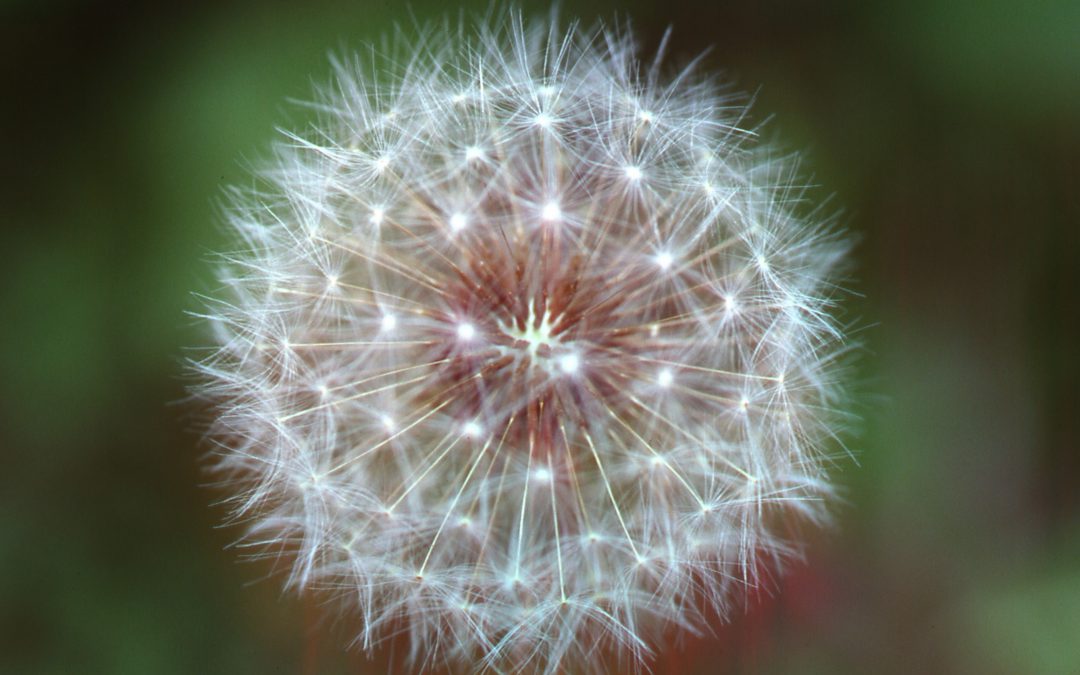
by Molly Jameson | Aug 21, 2020
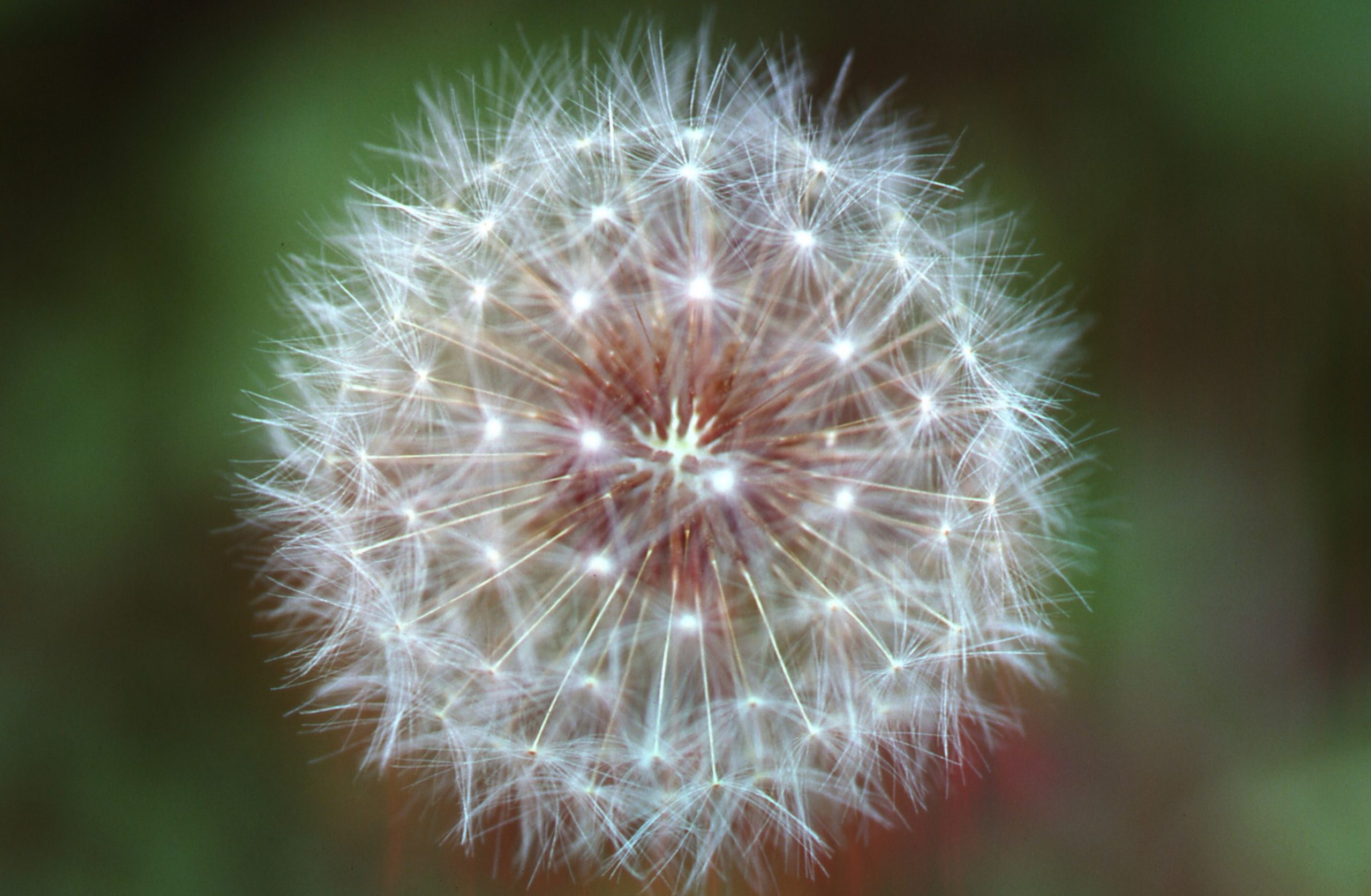
Dandelions form “blow balls” to disperse seeds by wind. Photo by Joseph OBrien, USDA Forest Service, Bugwood.org.
A Second Look at Dandelions
Many of us have memories of spotting a dandelion as a child and immediately gravitating toward it, eager to hold it up by the stem and blow with all our might. If all the puffs of white disappeared, we were sure the dandelion would grant us our wish.
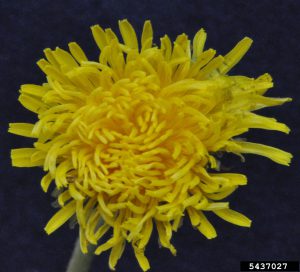
Dandelion flowers, leaves, and roots are all edible and contain many vitamins, minerals, and antioxidants. Photo by Bruce Ackley, The Ohio State University, Bugwood.org.
As an adult, spotting a dandelion may still remind you of the good ole days, but when they begin to encroach upon your lawn or garden, they are likely to be seen less as a friend and more as a foe.
Perhaps the reason they give landscapers headaches is because dandelions thrive in many conditions. They have the ability to grow in the sun and in the shade, and they do well in both disturbed and undisturbed soils. Once more, they thrive in moist environments, and because they are perennials capable of developing long taproots, they also do well in dry environments. A dandelion taproot can grow as deep as three feet in search of water.
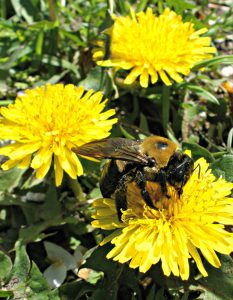
Dandelions are an important early season nectar and pollen source for bees, such as for this carpenter bee. Photo by Ansel Oommen, Bugwood.org.
Although the common dandelion (Taraxacum officinale) is native to Eurasia, it is naturalized to North America and is believed to have arrived with European settlers in the 1600s. At first glance, you may wonder why colonists bothered to transport such a small yellow flower so far. As it turns out, dandelion flowers, leaves, and taproots are all edible, serving as great sources of fiber and vitamins A, C, and K. Additionally, they are a source of antioxidants, such as beta-carotene, and minerals such as iron, calcium, potassium, and magnesium. Coupled with their ability to thrive in many conditions, you can see why dandelions made a great edition to colonial herb gardens.
Since their arrival in North America, dandelions have become an important early season nectar and pollen source for bees, and they help support both the larval and mature stages of some species of butterflies and moths. Additionally, dandelions can be a food source for wildlife, such as white-tailed deer, quail, wild turkeys, and rabbits.
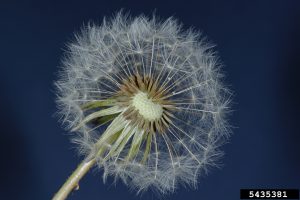
A single dandelion “flower” can have more than 100 florets that each develop into a seed-like fruit that has a parachute-like pappus that can carry the seed up to five miles away. Photo by Joseph Berger, Bugwood.org.
A member of the Aster family, dandelions are related to lettuce, artichokes, and sunflowers. When you look at a dandelion flower, you are actually seeing many, many tiny flowers, called florets. A single dandelion “flower” can have more than 100 florets that open in the morning and typically close at night. After a few days, the florets remain closed and each develops a seed-like fruit atop a hollow flower stalk. As the seeds mature, the flower stalk elongates up to two feet high and a tall standing “blow ball” forms. Each ball is comprised of many seeds, each attached to a tuft of bristles, or pappus, that can use the wind to parachute the seed up to five miles away.
So next time you notice a patch of dandelions standing tall on the landscape, put down your herbicide and take a closer look. Observe the visits from hungry bees and butterflies, perhaps pluck some fresh flower petals to add to your morning pancakes, and then pick out your favorite puff of white and make a wish.
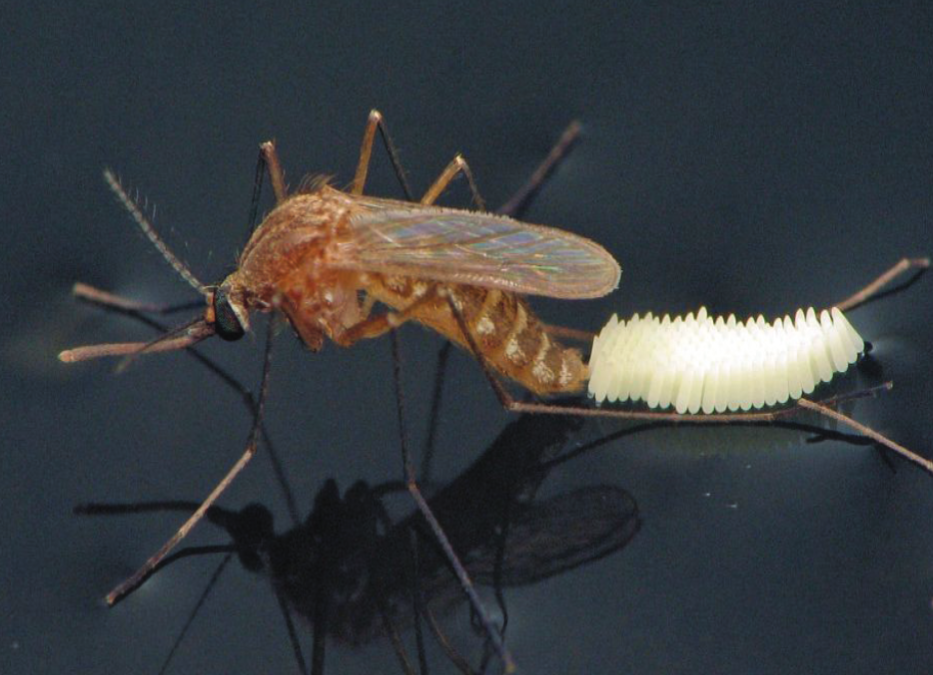
by Ray Bodrey | Jul 15, 2020
Attacking mosquitos are spoilers for our outdoor activity interests this time of year. Hurricanes and other storm events tend to be a catalyst that increases these populations. Not only are mosquitos a nuisance, but they are carriers of several diseases. But, there are ways to control these annoying pests and get some relief.
Mosquito populations can be divided into two categories: floodwater mosquitoes and standing water mosquitoes.
Floodwater mosquitoes need water to lay their eggs, and the eggs also need to dry out before hatching during a storm event. Moist areas like pastures, planting furrows, salt marshes and swales are prime habitat. If you look close, the eggs can be found in cracks in the soil. Again, stormy rains and surge act as a catalyst for these eggs to hatch. So, what is the approximate estimate of mosquito eggs per acre in floodwater habitat in Florida? Scientist estimate 700,000 to 1.3 million eggs per acre. And yes, that’s per acre. Unfortunately, small scale efforts to reduce standing water around properties have little effect on control.
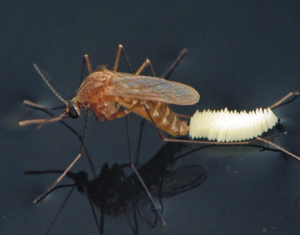
Figure 1. Standing water mosquito and eggs (Culex quinquefasciatus).
Credit: S. McCann, UF/IFAS/FMEL.
On the other side of the coin, standing water mosquitos need,…you guessed it, standing water to lay their eggs. These mosquito eggs cannot withstand drying out, therefore cannot hatch into larva. Females lay eggs on the surface of water with a hatching time of around 24 hours. The larva to pupae to adult stage happens quickly in mosquitoes, and the thirst for blood is not far behind. After a female finds a blood source, the cycle starts all over again. Only the females have biting mouth parts. Both male and female mosquitoes feed on the nectar of flowers. It’s the female mosquitoes that usually need a blood meal to insure mature eggs.The combination of the two groups of mosquitoes provide for a double whammy put in place by a storm. When dry areas flood, floodwater mosquito eggs hatch. When floodwater has nowhere to go, standing water mosquitoes have an abundance of places to lay eggs.
Unfortunately, some diseases can be transmitted by mosquitoes, such as west nile virus, eastern equine encephalitis and even heart worms in dogs. So, what can be done to combat these pests around your property? Reducing the amount of standing water helps dramatically, especially, dumping water holding containers. Cleaning debris from rain gutters too, can help as water can collect in blocked gutters. Mineral or cooking oil can be added to standing water and rain collection devices, as the oil forms a thin film on the surface of the water which causes larvae and pupae to drown. This is also a good control method with plant containers that collect water. Mosquito biological controls, like Bt (Bacillus thuringiensis) are helpful and will not harm pets or livestock. These products can be used in fish habitats, animal water troughs, bird baths, rain barrels, roof gutters and tree holes, just to name some. Please read precautionary statements and manufacturer application directions before use. Rain gardens are also very beneficial in suppressing standing water. If you have an area of your property that is known for water holding capacity, be sure to plant water loving plants in that area.
For more information please contact your local county extension office.
Supporting information for this article can be found in the UF/IFAS EDIS publication: “Hurricanes and Mosquitos” by C. Roxanne Connelly: https://edis.ifas.ufl.edu/pdffiles/IN/IN53500.pdf
UF/IFAS Extension is an Equal Opportunity Institution.













